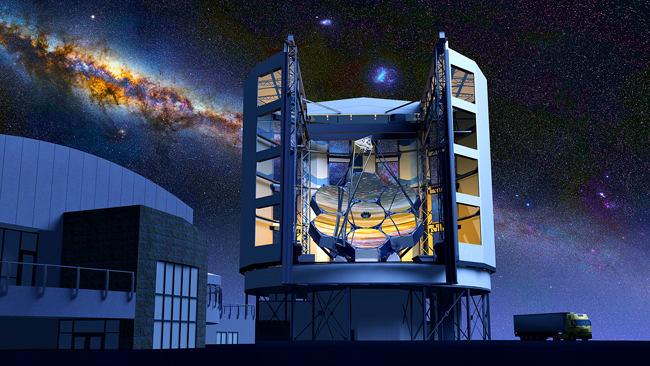The Giant Magellan Telescope, designed in part by UT faculty, has passed reviews and is now ready for construction, according to an announcement by the McDonald Observatory last week. Once constructed, it will be the world’s largest visual telescope.
The telescope underwent five separate weeklong reviews over the past 12 months with five panels. The panels reviewed technical aspects, design and cost plans, according to Patrick McCarthy, director of the Giant Magellan Telescope Organization, commonly known as the GMTO.
“All of the review teams returned very positive results, and the project passed all of our reviews,” McCarthy said. “We have a rigorous program for testing components of the telescope.”
McCarthy said, in addition to serving on the advisory committees and in the board of directors for GMTO, University faculty are contributing to the building of the telescope by designing and eventually constructing one of the instruments to be used on the telescope.
David Lambert, director of the McDonald Observatory and member of GMTO’s board of directors, said the telescope will be a great benefit to the University’s astronomy department.
“Access to the world’s largest telescope will enable us to attract and attain the very best faculty, the very best graduate students and even the very best
undergraduate students,” Lambert said. “In the United States, we are part of a very small group of universities with access to this telescope.”
According to McCarthy, the telescope will primarily be used to study planets that aren’t easily visible with existing technology, and, particularly, planets that could potentially support life. Lambert also said the telescope will be able to capture images of galaxies that have never before been closely observed.
“Because it’s a large telescope, you can look at very faint things,” Lambert said. “So, we’re looking at the very first stars and galaxies that were formed after the Big Bang … . You can image — very crisply and sharply — nearby stars and identify planets.”
Karl Gebhardt, astronomy professor and associate chair of the University’s astronomy department, said he believes the telescope will be the greatest advancement for astronomy in his lifetime.
“Having UT involved in such an important endeavor is an example of the excellence this university provides,” Gebhardt said. “I look forward to many years of using the GMT, trying to understand the formation of the universe, the long-term fate of the universe, and finding the largest black holes throughout the universe.”





















